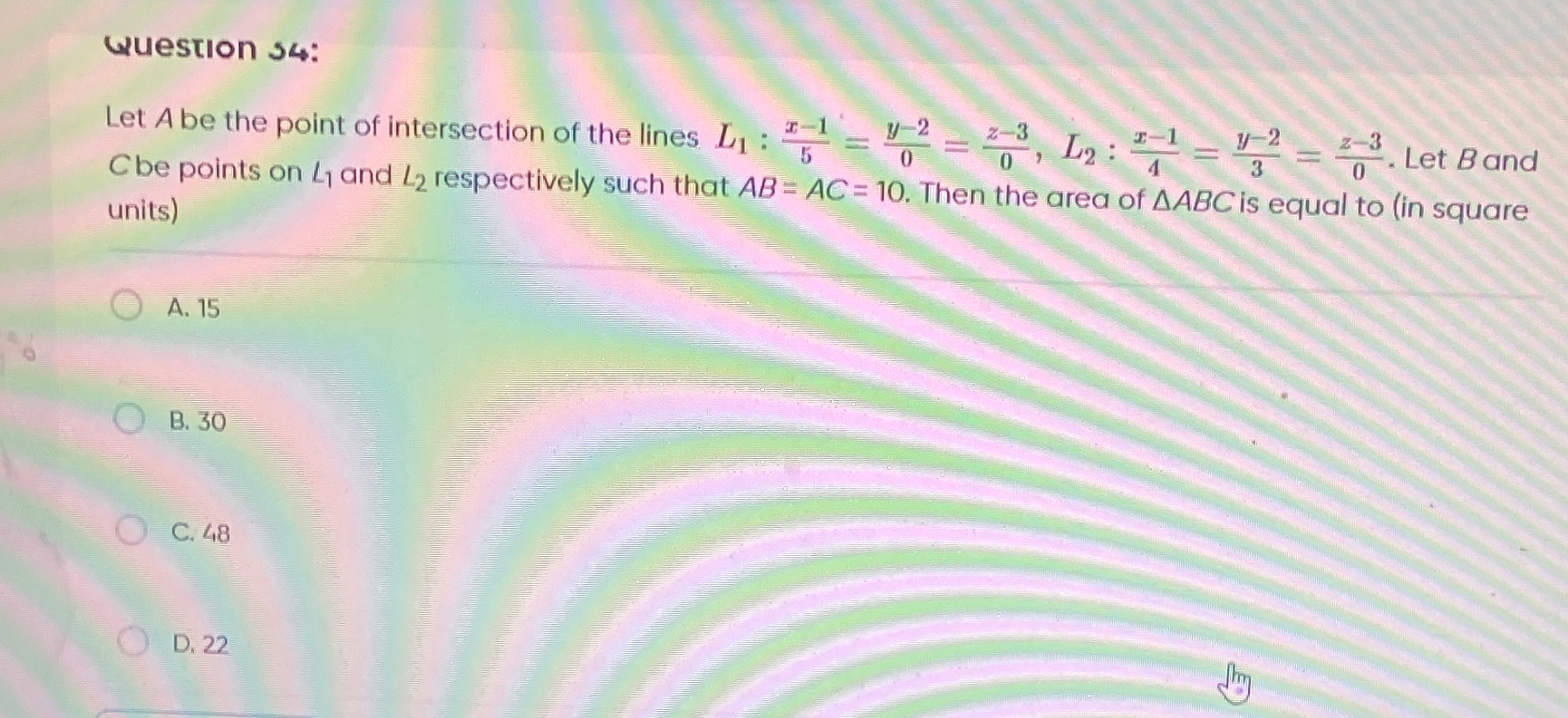Question
Question: Let A be the point of intersection of the lines $L_1: \frac{x-1}{5}=\frac{y-2}{0}=\frac{z-3}{0}, L_2...
Let A be the point of intersection of the lines L1:5x−1=0y−2=0z−3,L2:4x−1=3y−2=0z−3. Let B and C be points on L1 and L2 respectively such that AB=AC=10. Then the area of △ABC is equal to (in square units)

15
30
48
22
30
Solution
- Find the Intersection Point A: The equations of the lines are: L1:5x−1=0y−2=0z−3 L2:4x−1=3y−2=0z−3
From L1, we have y−2=0⟹y=2 and z−3=0⟹z=3. From L2, we have z−3=0⟹z=3.
Substitute y=2 and z=3 into L2: 4x−1=32−2=03−3⟹4x−1=0=0. This gives x−1=0⟹x=1. So, the intersection point A is (1,2,3).
-
Find the Position Vectors of B and C:
-
Point B on L1: L1 passes through A(1,2,3) with direction vector d1=(5,0,0). The unit direction vector is d1^=5(5,0,0)=(1,0,0). Since AB=10, AB=10d1^=(10,0,0). B=A+AB=(1,2,3)+(10,0,0)=(11,2,3).
-
Point C on L2: L2 passes through A(1,2,3) with direction vector d2=(4,3,0). The unit direction vector is d2^=42+32(4,3,0)=5(4,3,0)=(54,53,0). Since AC=10, AC=10d2^=10(54,53,0)=(8,6,0). C=A+AC=(1,2,3)+(8,6,0)=(9,8,3).
-
-
Calculate the Area of △ABC: The area of a triangle formed by vectors AB and AC is given by 21∣AB×AC∣. AB=(10,0,0) AC=(8,6,0)
The cross product is:
AB×AC=i108j06k00=i(0)−j(0)+k(10×6−0×8)=(0,0,60)The magnitude is ∣AB×AC∣=02+02+602=60.
Area =21×60=30 square units.
Alternatively, using Area =21AB⋅ACsinθ: AB=10, AC=10. AB⋅AC=(10)(8)+(0)(6)+(0)(0)=80. ∣AB∣∣AC∣cosθ=10×10cosθ=100cosθ. 80=100cosθ⟹cosθ=54. sinθ=1−(54)2=1−2516=259=53. Area =21×10×10×53=50×53=30.
